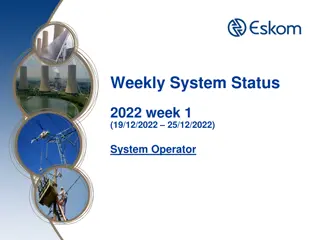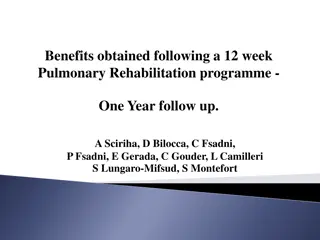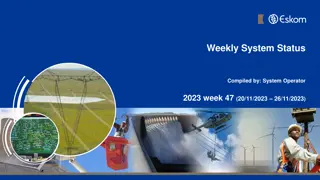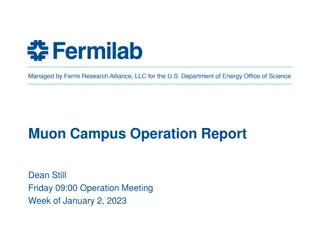
Traditional SDLC Stages and Project Factors Overview
Discover the key stages of the traditional Software Development Life Cycle (SDLC) including initiation, analysis, design, implementation, and support. Learn about important project factors and steps involved in the preliminary investigation process.
Download Presentation

Please find below an Image/Link to download the presentation.
The content on the website is provided AS IS for your information and personal use only. It may not be sold, licensed, or shared on other websites without obtaining consent from the author. If you encounter any issues during the download, it is possible that the publisher has removed the file from their server.
You are allowed to download the files provided on this website for personal or commercial use, subject to the condition that they are used lawfully. All files are the property of their respective owners.
The content on the website is provided AS IS for your information and personal use only. It may not be sold, licensed, or shared on other websites without obtaining consent from the author.
E N D
Presentation Transcript
COMI-1230 Systems Analysis & Design
Week 2 Outline Traditional SDLC Project Factors Steps in Preliminary Investigation Quick Meeting with Groups
Summary of SDLC Phase 2. Analysis Conduct preliminary investigation Perform detailed analysis activities: Study current system Determine user requirements Recommend solution Phase 1. Planning Phase 3. Design Acquire hardware and software, if necessary Develop details of system Review project requests Prioritize project requests Allocate resources Identify project development team Phase 4. Implementation Develop programs, if necessary Install and test new system Train users Convert to new system Phase 5. Support Conduct post-implementation system review Identify errors and enhancements Monitor system performance
Traditional SDLC Stages: Plan (Initiation) Starting point for each system Requires a system request (in writing) Reasons for request Why might a request be made? To correct problem in existing system To improve existing system Outside group may mandate change Competition can lead to change
Traditional SDLC Stages: Plan (Initiation) Originates from appropriate level (Org Chart) Can be analyzed in both vertical (traditional) and horizontal views Vertical view Shows hierarchy Chain of command / authority Horizontal view Shows functional boundaries Critical to identify areas that work togehter As a result of the request: Preliminary (or Initial) Investigation Feasibility Study Economic Organizational (Cultural) Technical Schedule Resource Cost/Benefit Analysis
Feasibility Economic Development costs Consultants / employee training Hardware / Software Organizational (Cultural) Competency levels of existing staff Need to embrace change Technical Hardware / Software Infrastructure Network / Security Schedule Changes to current business cycle Windows of implementation Coordinate other projects Resource Staff Time $$$$
Traditional SDLC Stages: Analysis Once the project is approved and Initiation stage is complete Identify the detailed system requirements Requirements Determination / Requirements Specification Key Activities: Fact finding / Needs Analysis Modeling How does current system operate Activity Diagram (Chapter 3, page 73) / BPM (Chapter 3, page 74) Logical Modeling of proposed new system DFD s (Data Flow Diagrams) Chapter 2
Traditional SDLC Stages: Design Specify in detail the system to be built based on the requirements as determined in the Analysis Phase DFD s are finalized Data is taken into account ERD s UI is designed Prototype is developed Working model of proposed system
Traditional SDLC Stages: Implementation Following testing and final approval the system is deployed Unit Testing Verify each program works by itself Systems Test Verify all programs in the application work together Integration Test Verify that the application works wit the other applications in the business Strategy needs to be developed to ensure the system is functioning properly Parallel testing Integration of existing data Deploy in phases rather than all at once Determine the critical Stakeholders to include
Traditional SDLC Stages: Implementation Training Include appropriate people Show how system works How to exactly use the new hardware / software
Traditional SDLC Stages: Maintenance Monitor system usage Attend to bugs/errors Manage enhancements
Guidelines for System Development Arrange tasks into phases (groups of activities) Involve users (anyone for whom system is being built) Systems Analyst is critical Responsible for designing and developing information system Liaison between users and IT professionals Project Team Consists of users, systems analyst, and other IT professionals Develop clearly defined standards (procedures company expects employees to follow)
Summary of SDLC Phase 2. Analysis Conduct preliminary investigation Perform detailed analysis activities: Study current system Determine user requirements Recommend solution Phase 1. Planning Phase 3. Design Acquire hardware and software, if necessary Develop details of system Review project requests Prioritize project requests Allocate resources Identify project development team Phase 4. Implementation Develop programs, if necessary Install and test new system Train users Convert to new system Phase 5. Support Conduct post-implementation system review Identify errors and enhancements Monitor system performance






















